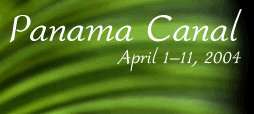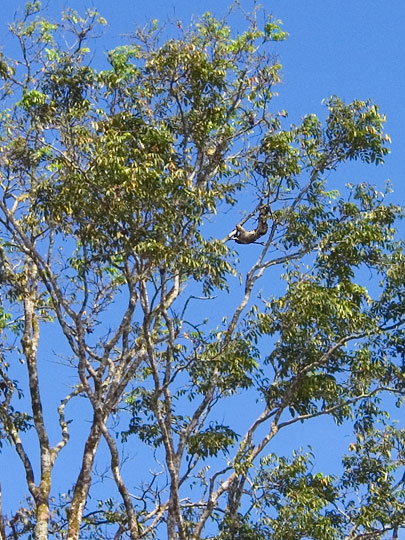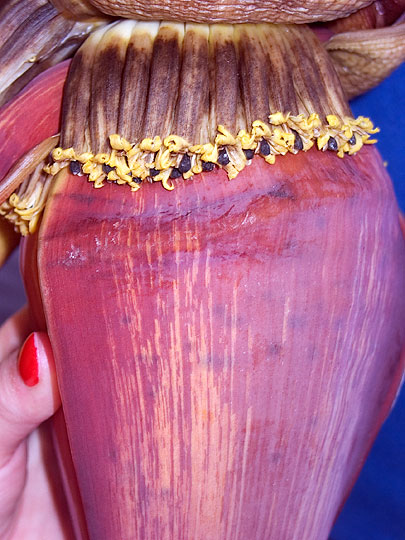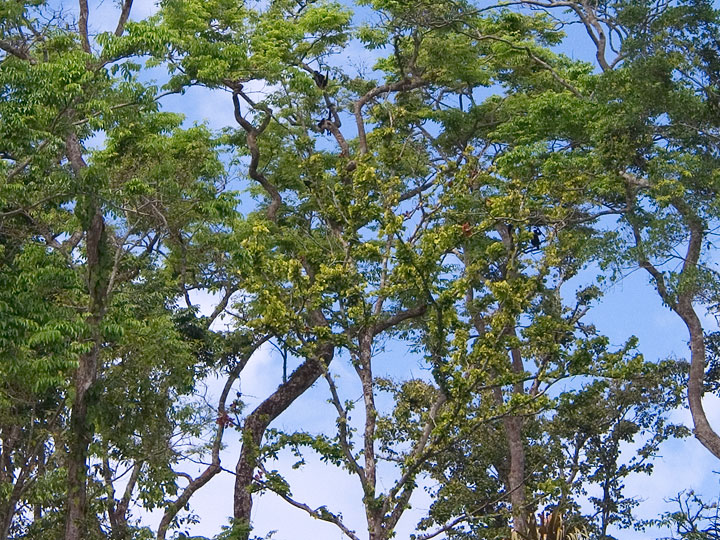
There are at least two Howler monkeys in this photo. These monkeys live in families. They have relatively stress-free lives, sleeping sixteen hours per day. Becky said that they were “tree” potatoes. Our tour guide shared with us the three ways Howler monkeys defend themselves—they break off branches and throw them at the offending visitor, make howling noises, and, if the first two don’t keep you away, they’ll defecate and urinate on you. Our tour guide added that this last method was “one hundred-percent effective.” I reckon so!
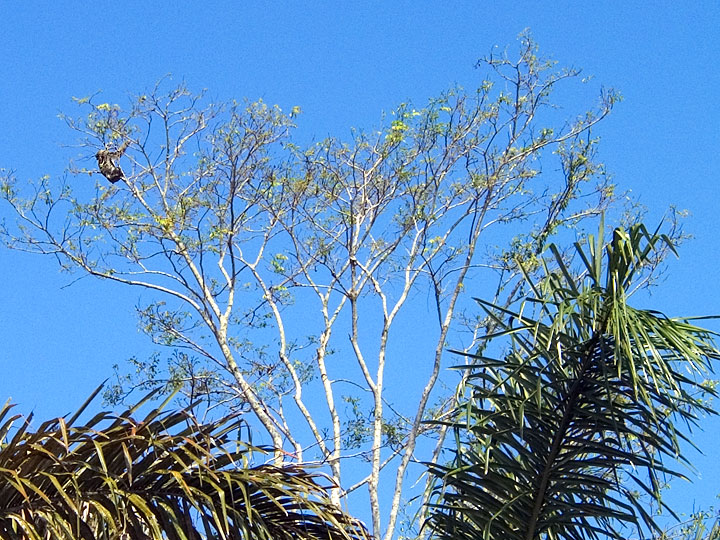
Here’s a sloth way up in a tree. According to our tour guide, this guy sleeps twenty to twenty-two hours per day and very rarely comes down from his tree, just every seven to eight days to go to the outhouse.
Here’s another sloth. This guy is hanging upside down from his six toes. He’s a three-toed sloth, not to be confused with the two-toed variety.
We thoroughly enjoyed seeing all of the various animal and and plant species on this excursion. At the end of the boat ride we enjoyed a Caribbean island party where we enjoyed the best pineapple we’ve ever tasted, lots of fresh watermelon, cantaloupe, coconut, cool water, and live music. Just before boarding the bus to go back to the ship, we bought a little clay toucan whistle because Becky thought her students would enjoy it. We recommend that anyone cruising to Costa Rica take part in this fun adventure.
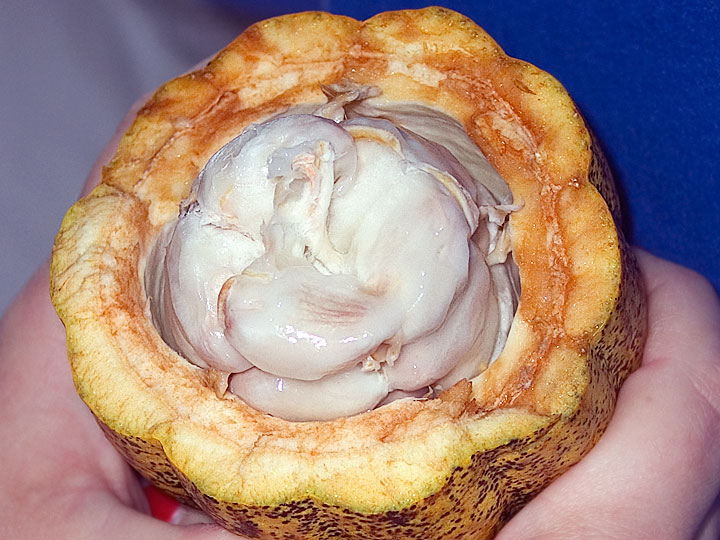
Want some chocolate? This is where it starts, though the road to becoming a Hershey bar is a long one. This is a cocoa bean that’d been cut open.
These are baby bananas. As you peel back the red leaves, you’ll find pods of immature bananas. As we made our way back to the ship, we saw several hundred acres of banana trees and learned about the complicated process by which bananas are kept fresh from the time they are harvested until the time they are put on the produce shelves in our local markets.
Coral Princess |
|
Ocho Rios, Jamaica |
|
Panama Canal |
|
Limon, Costa Rica |
13 | 14 |
George Town, Grand Cayman |
|
Cozumel, Mexico |
|
